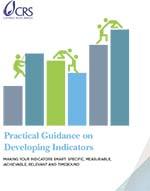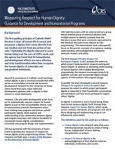Guidelines | May 18, 2022
Practical Guidance on Developing Indicators
This document provides step-by-step guidance on how to develop specific, measurable, achievable, relevant and timebound (SMART) indicators to help measure a project’s Theory of Change (TOC) and ensure evidence-based project adaptations and learning. It also explains at what stage in the project design process indicators should be developed and who should be involved. The guidance discusses common challenges, good practices, and tips for each of the S-M-A-R-T dimensions. The annexes present frequently asked questions about qualitative indicators, use of scales to measure quantitative indicators, as well as practical examples of adjusting donor-mandated indicators and much more.





